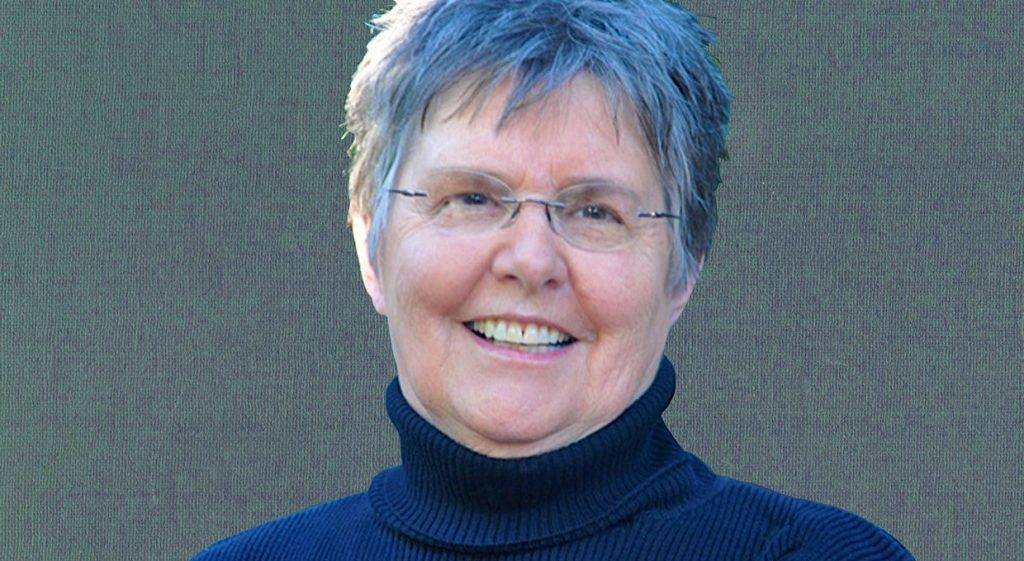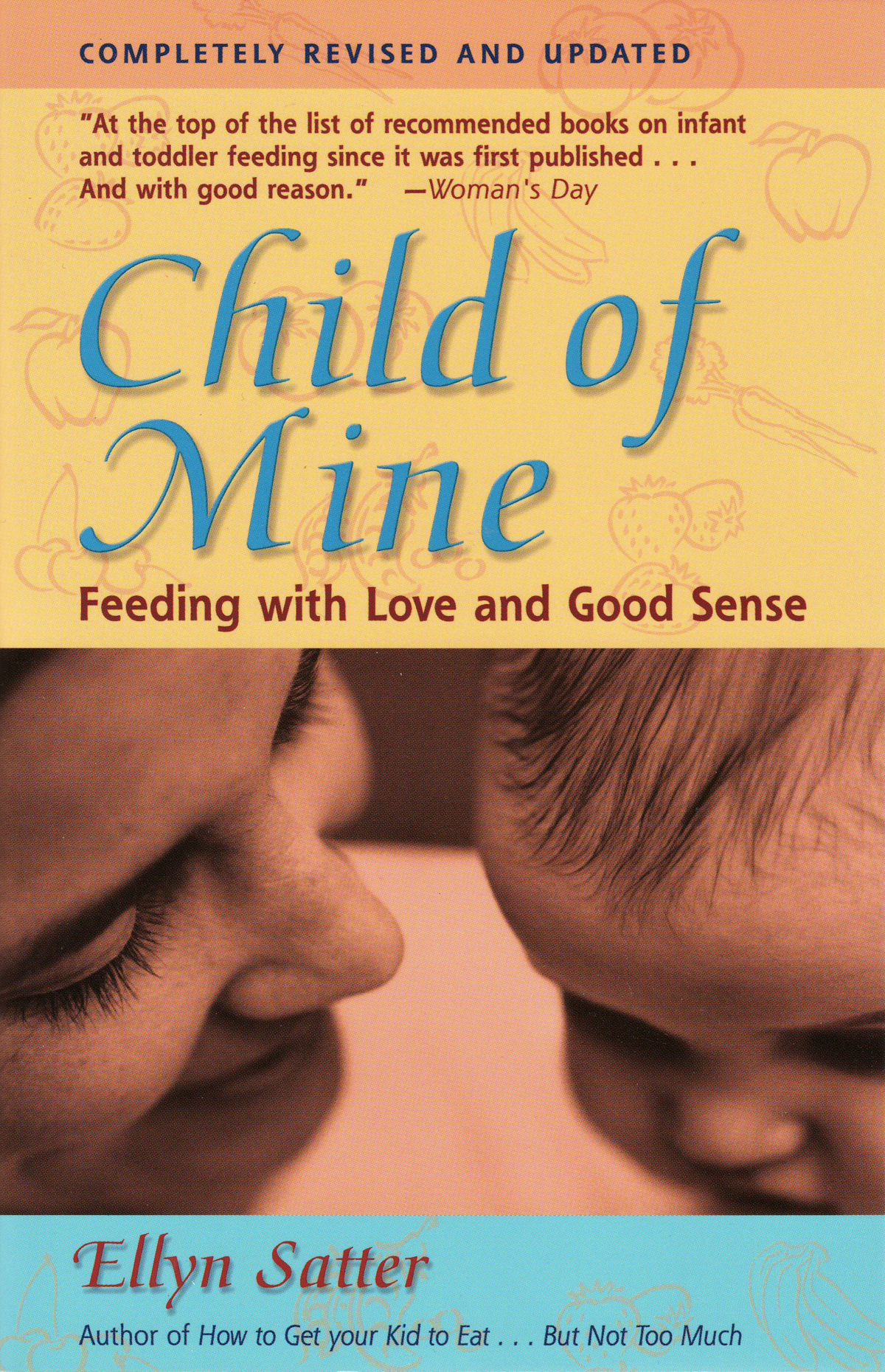The Satter approach to feeding: Ellyn's story
Ellyn Satter's storyThe Satter approach to feeding
by Ellyn Satter
My mission is to show parents how to make feeding practical, positive, and joyful for them and their children. We want our children to eat well and grow up to be healthy. I know now that the way to achieve children’s wellness is to let them feel good about their eating.
Feeding my child began poorly
I didn’t worry about feeding. I was a dietitian working in an outpatient medical practice; I knew about these things. I was shocked when, at my rapidly growing and happily breastfeeding daughter’s one-month visit, my pediatrician announced, “It is time to start solid foods.” I accepted those crazy instructions, struggled with feeding, and started the downhill slide to weaning my daughter from breastfeeding at age four months. I deferred to that MD, but she didn’t deserve it. Through generations of parents and babies, she ignored the evidence that her advice was doing harm: parents and babies struggled around feeding.
My judgment was better than the guidance
I thought all along that it couldn’t be right. For my month-old daughter, snuggling and breastfeeding worked, and spoon-feeding just plain didn’t. But I went with the program, and after my daughter and I survived new motherhood, I asked questions. I found a lot of clinicians, researchers, and other parents who parroted the advice I had been given. But there were a few who were tuned into the science, relationships, and practicality of feeding. The whole story is in Child of Mine. To make a long story short, when my sons were born I followed my own judgment with feeding. It was fun and easy. Because the new pediatricians at work were willing to learn, I launched my pediatric practice. I taught other parents a kinder, gentler, and more rewarding way to feed their children and solve childhood feeding problems. At the time I was still working on weight loss for adults, but I never got into that with children. If a child does it, I reasoned, it must be right.
Child of Mine: The farewell gift that wasn’t
A decade later and still smarting about that early bad advice, I shared my experience with other parents in Child of Mine: Feeding with Love and Good Sense. I intended that first (1983) edition of Child of Mine to be a farewell gift to dietetics and to feeding and raising young children. I was in graduate school, training to become a psychotherapist, and fully intending to leave dietetics behind. But Child of Mine took on a life of its own. The media, professionals, and parents were excited about the feeding stories, which were actually a minor part of the book. I learned more than I taught, as my audiences tasked me with solving their remarkable and revealing feeding challenges. In Child of Mine, I talked about the division of responsibility in feeding once – in the toddler chapter – but now it became central to my message! For a brief and heady time, folks listened when I said “do not put children on diets or restrict them in any way.” Unfortunately, obesity hysteria made them forget that critical piece of advice and use weasel words and tactics for restricting children’s food intake.
Back into the world of child-feeding
Rather than leaving the world of child-feeding, I turned right around and went back in, this time focusing on feeding dynamics rather than nutrition. Once again, I found tuned-in clinicians, researchers, and parents, and began testing Child of Mine’s practical recommendations with others’ observational research. I held my breath while I read those papers, but my advice held up! Apparently I was a good clinical observer with a functioning feedback loop.
ESI continues the mission
I have been working in the field of feeding dynamics ever since: writing, consulting, doing presentations, mentoring. The Satter Division of Responsibility in Feeding (sDOR) has become widely recognized and used, if not always accurately, and it is endorsed as the best practice in feeding by prominent child nutrition and pediatric agencies. In 2002, reasoning that my shelf-life was dwindling and wanting to position others to carry on the work, I started the Ellyn Satter Institute. Together, we do what we can to bring along other professionals and to help parents feed their children in practical, positive, and joyful ways. This website has millions of hits each year, and many professionals and parents depend on our feeding advice.
Testing sDOR
To develop a test for sDOR, Barbara Lohse, professor and researcher, and I wrote, tested, rewrote, and tested-tested-tested again. After 10 years, sDOR 2-6y has been validated and is available for use in clinical practice and research. Our validation research shows that parents really do what they say they do with feeding. When they follow sDOR, their children have lower nutritional risk, and that is enormous! Unlike the struggles around getting children to eat the right food and avoid the wrong food that go on in many if not most families, parents simply have to be nurturing and trusting feeding by following sDOR. They can provide their child with the what, when, and where of feeding and let their child do the how much and whether of eating. Parents who are Eating Competent do better with following sDOR, and parents who follow sDOR feel and do better overall: They sleep better, their moods are better, and they have lower stress.
Join our mission!
- Expose yourself to the possibilities. Poke around on the ESI website and see what you see. Read my books. Watch the videos. Get on our mailing list.
- Join our Facebook pages for the public and for professionals. Ask questions. Share your experience. Learn and grow.
- Consider whether you want to become a missionary. Get in touch with us and share your ideas for how you could help reach out to other parents and professionals.
- Send money. ESI does lot on a slender shoestring. Anything you can afford helps. Your donation is so important in all ways – and it is tax-deductible.ble.
Click to read the story of Ellyn Satter’s approach to eating
Learn about fdSatter
Understanding fdSatter
- Child overweight: are current guidelines helpful? do they do harm?
- Do children lose the ability to self-regulate?
- Does the division of responsibility work in clinical care?
- How to feed your child: birth through adolescence
- Moves and counter-moves with feeding your child
- Picky eating: born or made?
- The sticky topic of Halloween candy
- Trouble-shooting with the division of responsibility
Child of Mine
This is the book that started it all! First published in 1983 and since revised, Child of Mine is the new parents’ companion.


